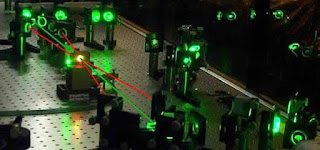CPA Laser System
How to define Chirped Pulse Amplification (CPA) laser system
Chirped Pulse Amplification (CPA) is a technique used to amplify ultrafast laser pulses to extremely high peak powers. The technique involves stretching a short-duration laser pulse in time, amplifying the resulting lower-intensity pulse, and then recompressing it to its original duration.
The CPA system
consists of several key components. The first is a mode-locked laser oscillator
that produces short-duration laser pulses with a broad spectrum of frequencies.
These pulses are then passed through a pulse stretcher, which uses dispersive
elements such as diffraction gratings or prisms to spread the pulses out in
time. This stretching process reduces the peak intensity of the pulse and makes
it easier to amplify. The stretched pulse is then amplified in a laser
amplifier, which can be based on either solid-state or fiber-optic technology.
The amplification process is typically achieved through stimulated emission,
where the photons in the pulse induce the emission of additional photons from a
gain medium, such as a doped crystal or fiber.
After amplification, the pulse is passed through a pulse compressor, which uses a similar set of dispersive elements to the pulse stretcher to recombine the pulse in time. The compressed pulse is then focused onto a target, where it can be used for various applications such as material processing, scientific research, or medical procedures.
Overall, the
Chirped Pulse Amplification system allows for producing extremely
high-intensity laser pulses, which can be used for a wide range of applications,
including high-field physics, materials science, and biomedical imaging.



Comments
Post a Comment